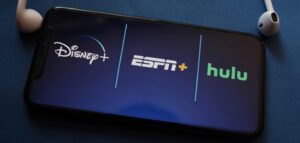It’s nearly impossible to say “women’s sexual health” and “brand-safe” in the same sentence.
Achieving brand safety on social platforms through algorithmic decisioning has been a focus for platforms, who face pressure from advertiser clients and, increasingly, lawmakers who see algorithms amplifying misinformation.
But Facebook’s algorithmic blocking of ad creative is similarly askew, creating “false positives” of actual, licensed services.
The telehealth service wisp, which connects clients with providers for care relating to sexual and reproductive health, is no stranger to algorithmic obstacles online.
Wisp’s customer base is over 90% female. Founded in 2018, the brand started advertising via Google Search, both paid and organic, to reach people actively looking for online care solutions, said Jennifer Dwork, head of brand marketing at wisp.
“We’re just scratching the surface of digital,” Dwork said.
After establishing itself with search marketing, wisp is trying to move on up the funnel to reach new customers through social advertising, and it’s struggling to get its ads approved – particularly on Facebook.
Facebook’s ad management process allows brands to apply as approved telehealth providers with the right certification – “and we’re fully script certified,” Dwork said.
Even with the official seal of approval, the platform is giving wisp a hard time.
“You’d think content would be approved as long as it complies with Facebook’s rules – no expletives, no nudity – but that just hasn’t been the case,” Dwork said.
“[Censorship] is a common issue in women’s sexual and reproductive health because of the nature of the language that describes some of the issues at hand (i.e., body parts),” Dwork said, referring to common ailments like UTIs and yeast infections.
AdExchanger Daily
Get our editors’ roundup delivered to your inbox every weekday.
Daily Roundup
Wisp usually has to make its case to Facebook through account reps to eventually get the ads approved, which can take as long as three business days.
Last month, wisp struggled to run a new ad on Facebook. Humorous advice to avoid drinking wine while healing from a yeast infection isn’t a brand tagline you hear every day, but it seemed to raise alarm bells in Facebook’s ad approval process.
But wisp didn’t have a problem running this ad on other media platforms – or any of its ads, for that matter. “[Ad rejection] has happened one time on Snapchat, and we haven’t really encountered any issues to date on TikTok or YouTube,” Dwork said.
According to Dwork, Meta also shut down wisp’s Instagram account in the fall last year for a few days.
There must be something in the algorithms.
“[Facebook’s] algorithms for ad approvals just haven’t kept pace with the processes it has on the front end to get safe providers out there on its platform,” Dwork said in reference to wisp’s certifications.
“Facebook is a black box – it should have clear guidelines upfront about what approved telehealth providers can and can’t do.”
It’s pretty difficult to plan and allocate budget for ads that aren’t running. The back-and-forth with account reps is a start-and-stop cadence that makes the process of running ads a lot more manual than it is on other platforms, Dwork said.
And it doesn’t make sense from a business standpoint for Facebook to make it so difficult for a growing industry to use its platform, Dwork added.
Facebook is wisp’s largest social marketing platform.
But instead of waiting around for Facebook to clean up, wisp has had to get a bit more creative in how it describes its products and what they treat. (One word: fruit.)
Euphemisms aren’t an ideal strategy for wisp, though. It’s on a mission to destigmatize and desexualize women’s healthcare needs.
But algorithmic blockers called for a plan B.
There are different ways to have an honest conversation about women’s health, and humor is one of them, Dwork said, depending on the channel. “It’s another tool in our belt that really seems to resonate with people and draw them in.”














